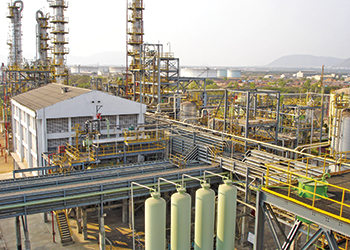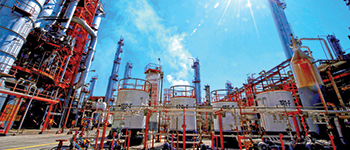
 Asset maintenance cost $63 billion in 2014
Asset maintenance cost $63 billion in 2014
The expenditure for global downstream asset maintenance is set to hit $322 billion between 2015 and 2019, up 12 per cent when compared to the previous five-year period, said a report.
In 2014, the spend totalled $63 billion for the world’s global downstream population of approximately 13,000 facilities, stated Douglas-Westwood, a leading energy business research firm in its forecast.
'Over the next five years we expect a 4.8 per cent compound annual growth rate (CAGR) with spend reaching almost $71 billion in 2019,' it added.
'A minor drop in expenditure is expected in 2015, due to industry-wide price deflation of equipment and services and budget tightening from integrated operators across their upstream and downstream operations,' explained the World Downstream Asset Maintenance Market Forecast report author, Kathryn Symes.
'However, the reduction in expenditure is expected to be short lived as the aging existing asset population as well as a number of new installations drive the overall growth,' she noted.
According to the report, North America will remain the largest market, accounting for 35 per cent of global expenditure between 2015 and 2019.
The region’s large, ageing downstream population requires a high level of maintenance, particularly as the level of regulation is relatively high, further driving the amount of maintenance services required to ensure downstream plants meet standards, it stated.
'The majority of forecast expenditure will be attributable to asset services, accounting for 72 per cent, with the remaining 28 per cent consisting of asset integrity services,' said Symes.
Meanwhile, Douglas-Westwood’s new world floating production market forecast 2015-2019 says that despite the current low oil price environment, between 2015 and 2019, $81 billion will be spent on FPS units – an increase of 73 per cent compared to 2010-2014. The value of annual installations is projected to grow from nearly $12 billion in 2015 to $21 billion in 2017 before declining to $17 billion in 2019. Projects already ordered will account for much of this spend.
Despite Capex growth, the outlook this year for orders is poor. The low oil price is expected to impact the market, leading to a number of delayed project sanctions.
This can be seen in the declining number of orders for 2015 and subsequent installation decline in 2018. Projects already under construction are unlikely to be affected.
FPSOs represent by far the largest segment of the market both in numbers (87 installations) and forecast Capex (81 per cent) during 2015-2019. TLPs account for the second largest segment of Capex (9 per cent) with FPSSs third (7 per cent).
Latin America will see nearly a third of the 110 installations forecast and 32 per cent of the projected Capex. Asia accounts for nearly a quarter of forecast installations, but only 13 per cent of spend. Africa is important in value terms, with 22 per cent of the projected Capex. Western Europe is expected to form 15 per cent of forecast spend. Deepwater expenditure will make up 68 per cent of the global FPS market.
Financing remains a challenge for leasing contractors and smaller E&P companies as a result of the lower oil prices. Low oil prices have placed additional strain on company budgets and greater efforts are being made to ensure delays and cost over-runs are avoided.



































































